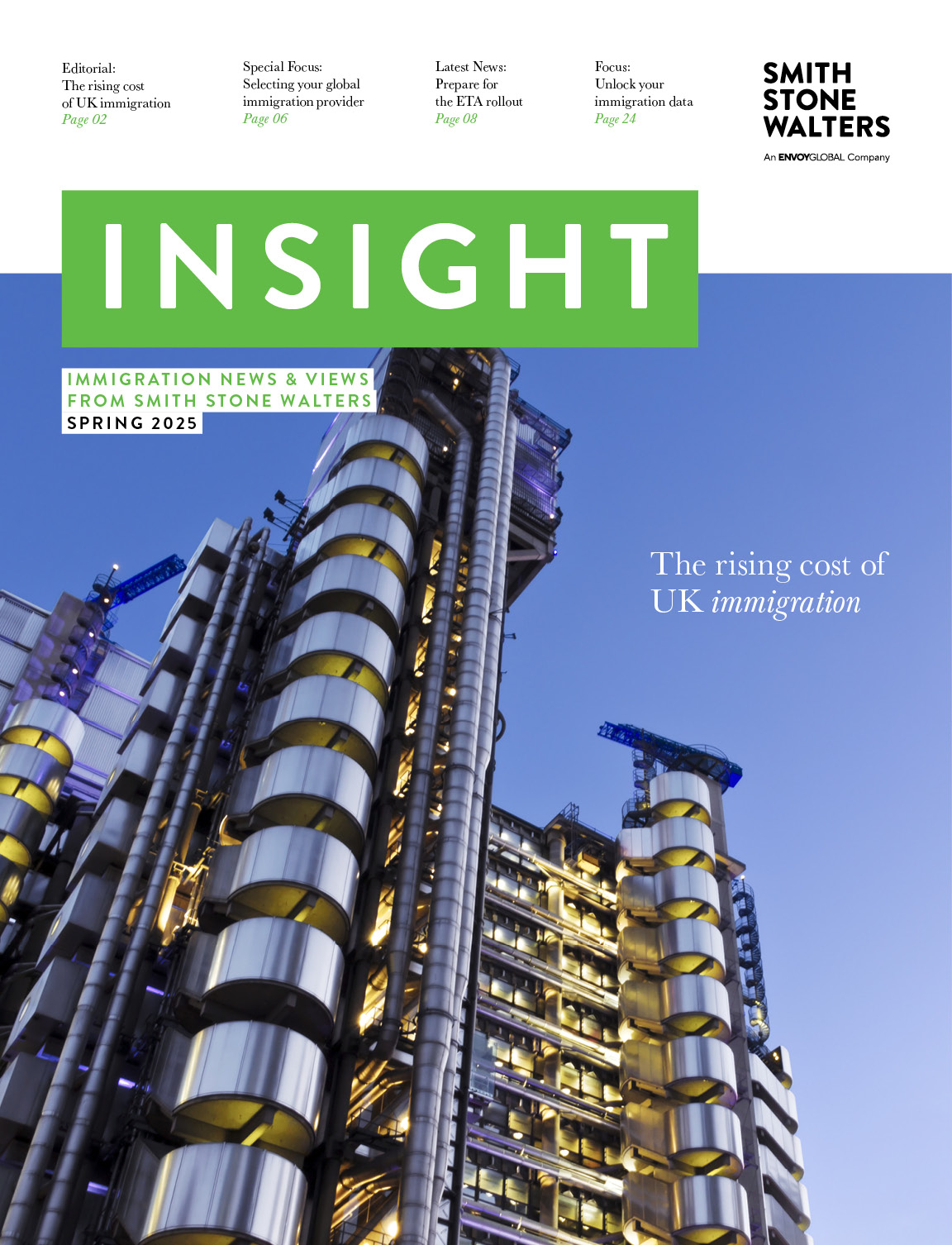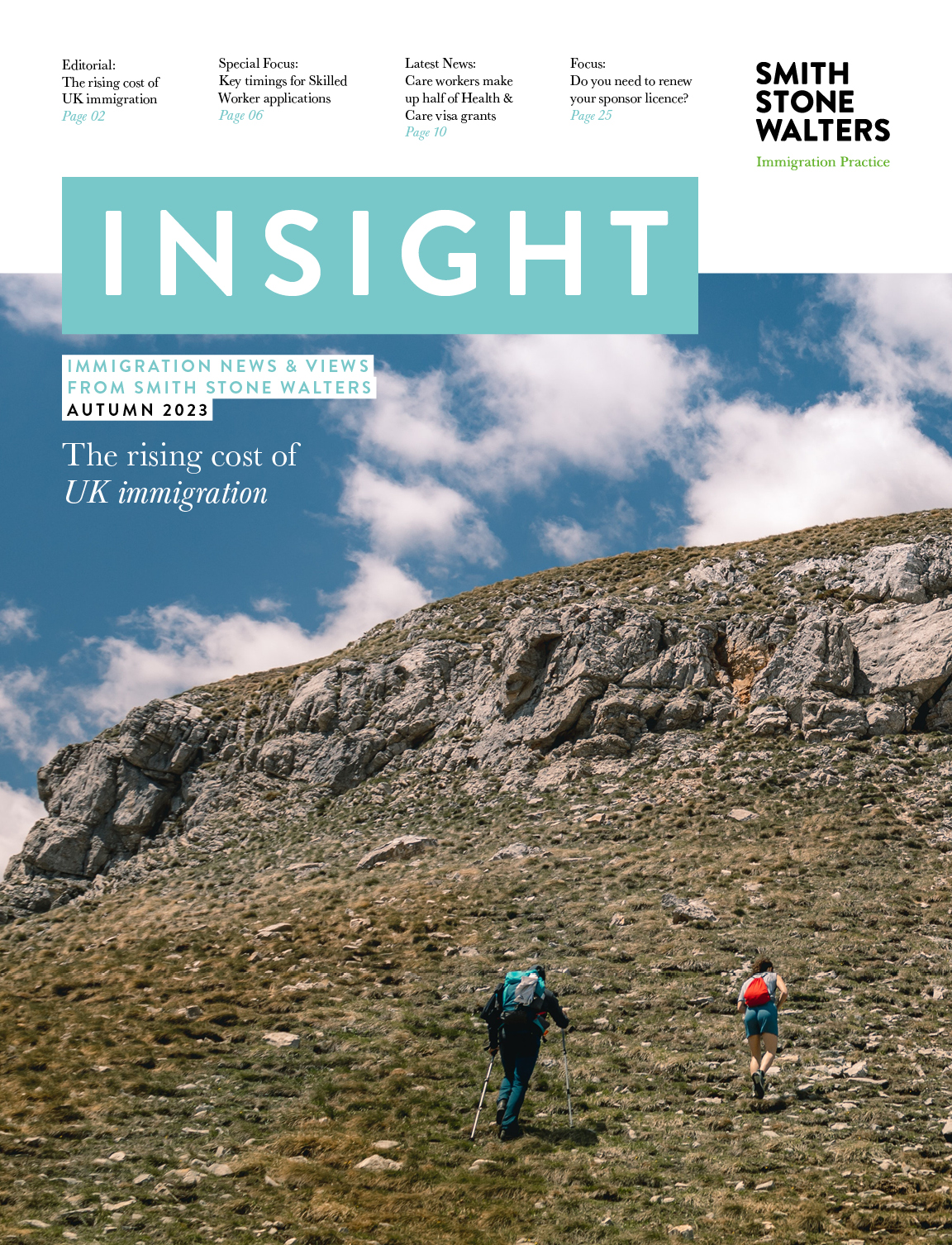Right to Work checklist
All UK employers are required by law to carry out initial right to work checks on each individual worker they intend to hire, in order to prevent illegal working.
It is an offence to knowingly employ anyone who does not have the right to work in the UK by reason of their immigration status. Employers can face a civil penalty of up to £20,000 for each illegally employed worker who does not have the right to work in the UK, and where correct right to work checks were not undertaken.
Employers may conduct either a physical document check or perform an online check to establish their employee’s right to work. In this article, we look at the types of documents you can accept and how to conduct physical and online checks.
Step 1: Obtain the applicant’s original documents
When carrying out a manual right to work check, you must ask to see the applicant’s original documents. The Home Office right to work checklist sets out the types of documents that can be accepted for a physical check.
Acceptable documents are categorised into the following lists, depending on the type of permission the holder has. Employers must obtain documents from either List A or List B when performing a physical right to work check.
List A
Documents under this list show that the holder is not subject to immigration control or has no restrictions on their stay, therefore they have an ongoing right to work in the UK. This includes all UK citizens, EU, EEA and Swiss nationals who have been granted settled status, and non-EEA nationals holing Indefinite Leave to Remain (ILR) or Right of Abode in the UK.
Documents that can be accepted from List A are:
- A passport (current or expired) showing the holder is a British citizen or a citizen of the UK and Colonies having the right of abode in the UK
- A passport or passport card (current or expired) showing that the holder is a national of the Republic of Ireland.
- A current document issued by the Home Office to a family member of an EEA or Swiss citizen, and which indicates that the holder is permitted to stay in the UK indefinitely.
- A document issued by the Bailiwick of Jersey, the Bailiwick of Guernsey or the Isle of Man, which has been verified as valid by the Home Office Employer Checking Service, showing that the holder has been granted unlimited leave to enter or remain under Appendix EU to the Jersey Immigration Rules, Appendix EU to the Immigration (Bailiwick of Guernsey) Rules 2008 or Appendix EU to the Isle of Man Immigration Rules.
- A current Biometric Residence Permit (BRP) issued by the Home Office indicating that the holder is allowed to stay indefinitely in the UK, or has no time limit on their stay in the UK.
- A current passport endorsed to show that the holder is exempt from immigration control, is allowed to stay indefinitely in the UK, has the right of abode in the UK, or has no time limit on their stay in the UK.
- A current Immigration Status Document issued by the Home Office with an endorsement indicating that the holder is allowed to stay indefinitely in the UK or has no time limit on their stay in the UK, together with an official document giving the person’s permanent National Insurance number and their name issued by a government agency or a previous employer.
- A birth or adoption certificate issued in the UK, together with an official document giving the person’s permanent National Insurance number and their name issued by a government agency or a previous employer.
- A birth or adoption certificate issued in the Channel Islands, the Isle of Man or Ireland, together with an official document giving the person’s permanent National Insurance number and their name issued by a government agency or a previous employer.
- A certificate of registration or naturalisation as a British citizen, together with an official document giving the person’s permanent National Insurance number and their name issued by a government agency or a previous employer.
List B
Documents under List B show that the holder’s right to be in the UK is time limited, or there are restrictions on their right to work. This includes all non-UK nationals who are subject to immigration controls and who require a visa to prove their right to work in the UK, and those holding pre-settled status. Acceptable documents from List B are split into two groups, as follows:
List B: Group 1
- A current passport endorsed to show that the holder is allowed to stay in the UK and is currently allowed to do the type of work in question.
- A current Biometric Immigration Document (biometric residence permit) issued by the Home Office to the holder which indicates that the named person can currently stay in the UK and is allowed to do the work in question.
- A current document issued by the Home Office to a family member of an EEA or Swiss citizen, and which indicates that the holder is permitted to stay in the United Kingdom for a time-limited period and to do the type of work in question.
- A document issued by the Bailiwick of Jersey, the Bailiwick of Guernsey or the Isle of Man, which has been verified as valid by the Home Office Employer Checking Service, showing that the holder has been granted limited leave to enter or remain under Appendix EU to the Jersey Immigration Rules, Appendix EU to the Immigration (Bailiwick of Guernsey) Rules 2008 or Appendix EU to the Isle of Man Immigration Rules.
- A document issued by the Bailiwick of Jersey or the Bailiwick of Guernsey, which has been verified as valid by the Home Office Employer Checking Service, showing that the holder has made an application for leave to enter or remain under Appendix EU to the Jersey Immigration Rules or Appendix EU to the Immigration (Bailiwick of Guernsey) Rules 2008, on or before 30 June 2021.
- A frontier worker permit issued under regulation 8 of the Citizens’ Rights (Frontier Workers) (EU Exit) Regulations 2020.
- A current immigration status document containing a photograph issued by the Home Office to the holder with a valid endorsement indicating that the named person may stay in the UK, and is allowed to do the type of work in question, together with an official document giving the person’s permanent National Insurance number and their name issued by a government agency or a previous employer.
List B: Group 2
- A document issued by the Home Office showing that the holder has made an application for leave to enter or remain under Appendix EU to the immigration rules on or before 30 June 2021 together with a Positive Verification Notice from the Home Office Employer Checking Service.
- A document issued by the Bailiwick of Jersey or the Bailiwick of Guernsey, showing that the holder has made an application for leave to enter or remain under Appendix EU to the Jersey Immigration Rules or Appendix EU to the Immigration (Bailiwick of Guernsey) Rules 2008 on or before 30 June 2021 together with a Positive Verification Notice from the Home Office Employer Checking Service.
- An application registration card issued by the Home Office stating that the holder is permitted to take the employment in question, together with a Positive Verification Notice from the Home Office Employer Checking Service.
- A Positive Verification Notice issued by the Home Office Employer Checking Service to the employer or prospective employer, which indicates that the named person may stay in the UK and is permitted to do the work in question.
Step 2: Check the documents are genuine
Once you have obtained an acceptable document from either List A or List B, you must check that the documents are genuine and that the person presenting them is the employee or prospective employee, the rightful holder of the document and has permission to do the type of work you are offering them.
- Are photographs consistent across documents and with the person’s appearance?
- Are dates of birth correct and consistent across documents?
- If applicable, are expiry dates for time-limited permissions in the future (i.e. the expiry dates have not passed)?
- Have you checked work restrictions to check that the person is able to work for you and perform the type of work you are offering?
- Are you satisfied that the document is genuine, belongs to the holder and has not been tampered with?
- Have you checked the reasons for any different names across documents (e.g. – Marriage certificate, divorce decree, deed poll)? If these supporting documents are provide, you should also make a copy and retain it for you records.
Step 3: Make a copy of the documents
For the final step of conducting a physical right to work check, you must make a clear copy of each document presented and retain the copy securely, either electronically or in hard copy.
- Passports: Copy and retain any page with the document expiry date, nationality, date of birth, signature, leave expiry date, biometric details and photograph, and any page containing information indicating the holder is entitled to enter or remain in the UK and undertake the work in question.
- All other documents: Copy and retain the document in full, both sides of a Biometric Residence Permit. You must also record and retain the date on which the check was made.
Know the type of excuse you have
If you have correctly carried out a right to work check on an employee using the three steps above, you will have an excuse against liability for a civil penalty if that person is found to be working for you illegally.
The type of excuse you will have depends on which list the documents you have checked and copied are from. You should be aware of the type of excuse you have and how long it lasts, as in some cases you may be required to perform a follow-up check.
- List A – You have a continuous statutory excuse for the full duration of the person’s employment with you. You do need need to carry out any follow-up checks.
- List B: Group 1 – You have a time-limited statutory excuse which expires when the person’s permission to be in the UK expires. You will need to conduct a follow-up check when the document evidencing their permission expires.
- List B: Group 2 – You have a time-limited statutory excuse which expires six months from the date specified in your Positive Verification Notice. You must carry out a follow-up check when this notice expires.
Conducting an online right to work check
Currently, employers can use the online checking service for employees or prospective employees who hold:
- A Biometric Residence Permit
- A Biometric Residence Card
- Status issued under the EU Settlement Scheme
- Status issued under the points-based immigration system
- British National Overseas (BNO) visa
- Frontier Worker Permit
To conduct an online right to work check, you will need to follow these three steps:
- Step 1 – Use the Home Office online right to work checking service by visiting https://www.gov.uk/view-right-to-work.
- Step 2 – Satisfy yourself that any photograph on the online right to work check is of the individual presenting themselves for work
- Step 3 – Retain a clear copy of the response provided by the online right to work check and store that response securely, either electronically or in hard copy, for the duration of employment and for two years afterwards.
Advice and training on Right to Work checks
If you have questions on right to work checks and maintaining ongoing compliance. Smith Stone Walters can help.
We can provide tailored training for your HR teams to ensure your business remains up to date with the latest guidance on right to work checks and other key areas of immigration.
To speak to an advisor, please contact us today.










